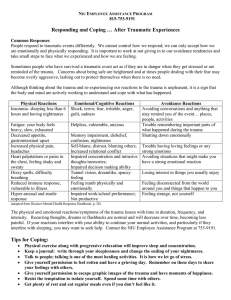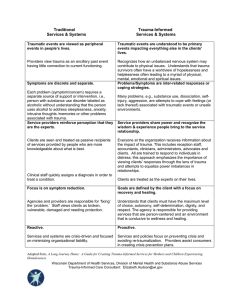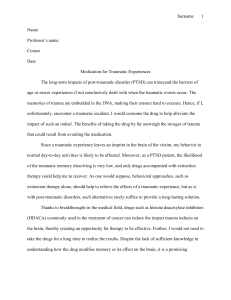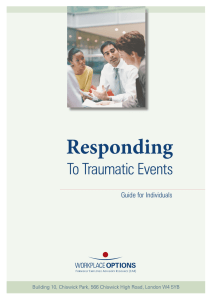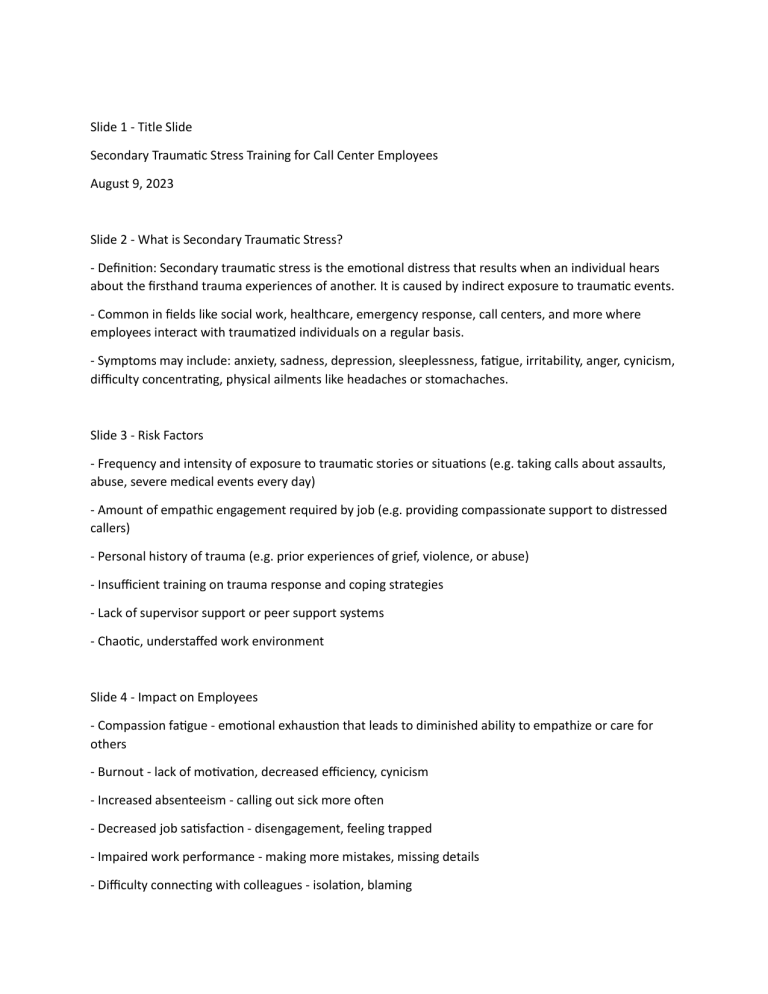
Slide 1 - Title Slide Secondary Traumatic Stress Training for Call Center Employees August 9, 2023 Slide 2 - What is Secondary Traumatic Stress? - Definition: Secondary traumatic stress is the emotional distress that results when an individual hears about the firsthand trauma experiences of another. It is caused by indirect exposure to traumatic events. - Common in fields like social work, healthcare, emergency response, call centers, and more where employees interact with traumatized individuals on a regular basis. - Symptoms may include: anxiety, sadness, depression, sleeplessness, fatigue, irritability, anger, cynicism, difficulty concentrating, physical ailments like headaches or stomachaches. Slide 3 - Risk Factors - Frequency and intensity of exposure to traumatic stories or situations (e.g. taking calls about assaults, abuse, severe medical events every day) - Amount of empathic engagement required by job (e.g. providing compassionate support to distressed callers) - Personal history of trauma (e.g. prior experiences of grief, violence, or abuse) - Insufficient training on trauma response and coping strategies - Lack of supervisor support or peer support systems - Chaotic, understaffed work environment Slide 4 - Impact on Employees - Compassion fatigue - emotional exhaustion that leads to diminished ability to empathize or care for others - Burnout - lack of motivation, decreased efficiency, cynicism - Increased absenteeism - calling out sick more often - Decreased job satisfaction - disengagement, feeling trapped - Impaired work performance - making more mistakes, missing details - Difficulty connecting with colleagues - isolation, blaming - Physical effects - headaches, stomach issues, worsening of chronic conditions Slide 5 - Impact on Organization - High turnover rates and loss of experienced employees - Reduced productivity and morale - more missed calls, lower motivation - Disruption in operations if short-staffed - inability to handle call volume - Poor customer service - impatient tone, lack of empathy with callers - Higher costs related to recruitment and training new staff - time and resources needed for onboarding - Possible increase in medical/disability costs - more sick days used Slide 6 - Prevention Strategies - Provide training on secondary/vicarious trauma and self-care - Ensure manageable workloads and caseloads - Promote use of EAP counseling services - Develop peer support groups and forums to share experiences - Educate supervisors on secondary trauma response - Allow short breaks to decompress during shifts - Limit amount of back-to-back traumatic calls per employee Slide 7 - Coping Techniques - Prioritize self-care - sleep, healthy eating, exercise - Set professional boundaries with callers - Practice mindfulness and grounding techniques during shifts - Maintain work-life balance - Seek counseling or talk to trusted friends/family - Use positive self-talk and affirmations - Try relaxation techniques like deep breathing, yoga, meditation - Engage in hobbies and activities you enjoy outside of work Slide 8 - Creating a Supportive Work Environment - Foster culture where secondary trauma is openly discussed - Ensure manageable caseloads and realistic performance goals - Provide regular debriefing sessions to process stressful calls - Offer quiet spaces for relaxation during shifts - Promote use of EAP counseling services - Provide break room with calming amenities like soft music, comfy chairs Slide 9 - Summary - Secondary trauma is an occupational risk for call center employees that can deeply impact staff wellbeing and performance - Organizations must provide proper training, policies and support systems to address it - Employees should actively utilize coping strategies and self-care techniques - A supportive, trauma-informed work culture is key to mitigating risks Slide 10 - Questions?
